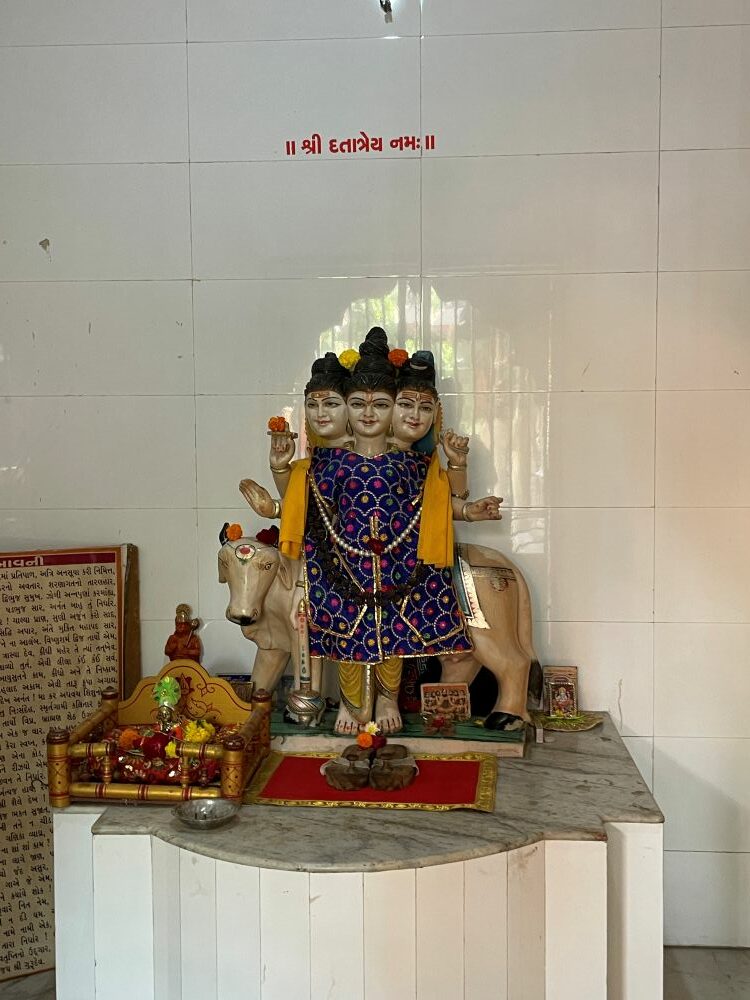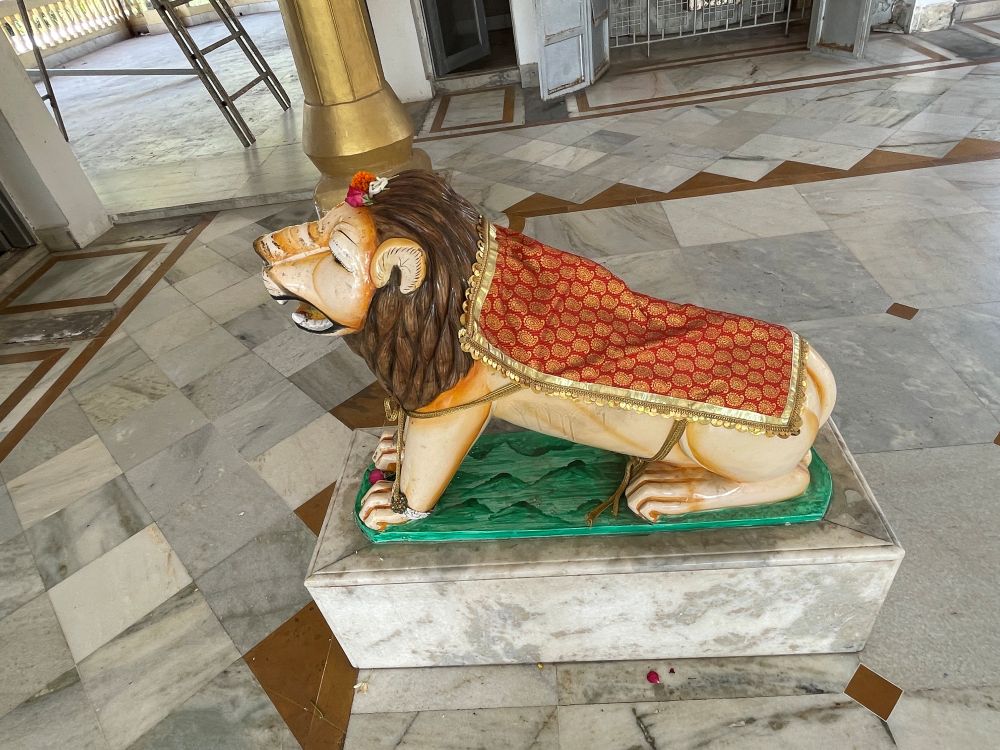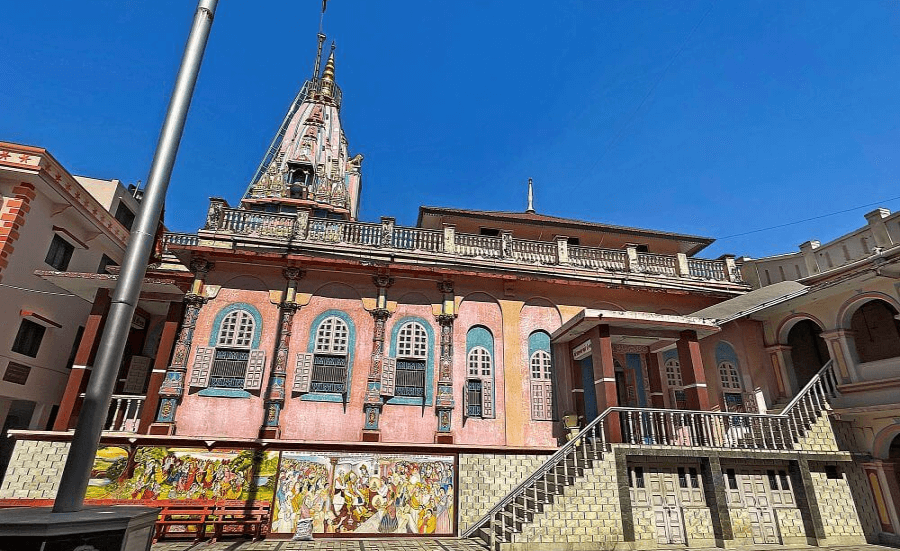
 Located near Surat, popularly known as the ‘Diamond City,’ the Pardeshwar Mahadev Temple at Pal is a revered spiritual destination for devotees from across India and beyond. Nestled within the Atal Ashram, this temple houses a remarkable 2,351 kg parad shivling (mercury lingam), which attracts thousands of devotees. Built according to Vastu Shastra (traditional Indian architecture), this temple, situated along the banks of the Tapi River, is home to Asia’s largest mercury lingam. Devotees believe that offering prayers here fulfills wishes and cures ailments. The temple is particularly crowded during Mahashivratri and the month of Shravan (July-August).
Located near Surat, popularly known as the ‘Diamond City,’ the Pardeshwar Mahadev Temple at Pal is a revered spiritual destination for devotees from across India and beyond. Nestled within the Atal Ashram, this temple houses a remarkable 2,351 kg parad shivling (mercury lingam), which attracts thousands of devotees. Built according to Vastu Shastra (traditional Indian architecture), this temple, situated along the banks of the Tapi River, is home to Asia’s largest mercury lingam. Devotees believe that offering prayers here fulfills wishes and cures ailments. The temple is particularly crowded during Mahashivratri and the month of Shravan (July-August).
In Hindu scriptures and mythology, the Parad Shivling holds immense spiritual importance.  Mercury is considered the most sacred of the eight metals and is believed to have originated from an aspect of Lord Shiva. Worshipping the parad shivling is said to invoke Shiva’s blessings, absolve sins from multiple lifetimes, and bring material and spiritual prosperity. Devotees also believe that worshipping the parad shivling is equivalent to performing 100 Ashwamedha Yajnas (ritual horse sacrifices), visiting the Char Dham (four holy pilgrimage sites), or donating 100,000 cows.
Mercury is considered the most sacred of the eight metals and is believed to have originated from an aspect of Lord Shiva. Worshipping the parad shivling is said to invoke Shiva’s blessings, absolve sins from multiple lifetimes, and bring material and spiritual prosperity. Devotees also believe that worshipping the parad shivling is equivalent to performing 100 Ashwamedha Yajnas (ritual horse sacrifices), visiting the Char Dham (four holy pilgrimage sites), or donating 100,000 cows.
The unique mercury composition of the lingam inspired the temple’s name, Pardeshwar Mahadev Temple. Hundreds of devotees visit daily to worship this extraordinary shivling, believed to be the heaviest mercury lingam in the world, recognised by the Golden Book of World Records.
Initially, the temple featured a garden with idols of various deities, including a smaller shivling. In 1977, the temple was formally constructed, and the idols and a 51 kg shivling were consecrated. Inspired by Mahant Guru Mahadevgiri Bapu of Saurashtra, the temple installed a 1,751 kg mercury shivling in 2004. This lingam was crafted by solidifying liquid mercury with other metals through intricate processes. Beneath the shivling, a 45-foot-deep pit was dug, where a large bell was placed. A three-inch brass tube connects the bell to the lingam, forming the nabhi kshetra (navel region). This region holds 500 kg of mercury and is connected to the lingam via a 45-foot copper wire. Together, the lingam and the nabhi kshetra weigh 2,351 kg. This parad shivling has been recognised by the ‘Golden Book of World Records’ as the heaviest mercury lingam in the world.
This parad shivling has been recognised by the ‘Golden Book of World Records’ as the heaviest mercury lingam in the world.
The temple is located on Pal-Hajira Road near an old octroi gate. As visitors approach, they are greeted by a towering statue of Shiva holding a trident at the entrance. The temple’s premises feature a beautifully paved courtyard, with a large yajna shala (sacrificial altar) on the left. This area houses a central yajna kund (fire altar) and replicas of the twelve Jyotirlingas on an elevated platform.The temple itself is built on a raised plinth, with a mandap (prayer hall) and a sanctum (garbhagriha). In the open mandap, a grand black stone idol of Nandi (Shiva’s vehicle) faces the lingam. Adjacent to Nandi, a turtle idol is placed. The sanctum features a marble floor, and the majestic shivling sits on a golden pedestal engraved with ‘Om Namah Shivaya.’  The lingam is adorned with a silver cobra canopy and a silver umbrella above it. A large trident is placed nearby, while a standing idol of Parvati is enshrined in a niche on the back wall of the sanctum. The sanctum’s dome is crafted in a hemispherical style, while the sanctum tower follows the Phansana architectural pattern, crowned with an amalaka and a three-tiered kalasha.
The lingam is adorned with a silver cobra canopy and a silver umbrella above it. A large trident is placed nearby, while a standing idol of Parvati is enshrined in a niche on the back wall of the sanctum. The sanctum’s dome is crafted in a hemispherical style, while the sanctum tower follows the Phansana architectural pattern, crowned with an amalaka and a three-tiered kalasha.
On the sanctum’s rear wall, devotees often stick coins and offer prayers to Shiva, expressing their heartfelt wishes. Outside, golden shrines house idols of Hanuman, Ganesha, Bhavani Mata, and the Navagrahas (nine celestial deities). A small platform holds an idol of Shani Dev (Saturn deity).In front of the temple lies the Atal Ashram, which features an Amba Mata Temple, a large half-relief idol of Hanuman, and a smaller, vermillion-coated Hanuman idol.  The complex also includes a serene marble idol of meditative Shiva, alongside a shrine for Kalabhairava, whose black stone idol is adorned with a golden crown.
The complex also includes a serene marble idol of meditative Shiva, alongside a shrine for Kalabhairava, whose black stone idol is adorned with a golden crown.
The ashram also has a Dattatreya Temple with idols of Lord Dattatreya, Vishwakarma (divine architect), and Guru Mahadevgiri Bapu. A smaller shivling is enshrined nearby for devotees to perform abhishek (ritual pouring of water). The adjoining satsang bhavan hosts bhajans and religious discourses. Additionally, the temple complex features a gaushala (cow shelter).
Devotees firmly believe that sincere worship at the Pardeshwar Mahadev Temple fulfils desires and brings divine blessings, including healing chronic ailments. Daily rudrabhishek (a sacred offering ritual) is performed on the shivling. Morning and evening aartis (ceremonial prayers) take place at 6:00 AM and 7:30 PM, respectively.
The temple hosts a variety of religious events throughout the year, including: Mahashivratri, Hanuman Jayanti, Guru Purnima and weekly bhandara (community feasts) every Saturday and Sunday. Festivities during the Shravan month, attracting thousands of devotees. The Pardeshwar Mahadev Temple offers a harmonious blend of spirituality, architectural beauty, and cultural significance, making it a must-visit destination for devotees and tourists alike.



